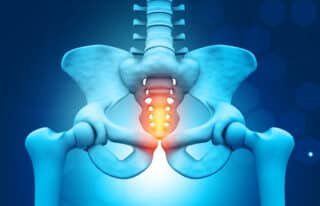HIP ARTHROPLASTY

What is Total Hip Arthroplasty?
Total hip arthroplasty, commonly known as hip replacement surgery, is a medical procedure designed to relieve hip pain and improve function in patients with severe hip joint damage. This damage can result from various conditions such as osteoarthritis, rheumatoid arthritis, fractures, or other degenerative joint diseases.
Why is Total Hip Arthroplasty Needed?
The hip joint is a ball-and-socket joint, where the ball (femoral head) fits into the socket (acetabulum) of the pelvis. Over time, the cartilage that cushions these bones can wear away, leading to pain, stiffness, and reduced mobility. When conservative treatments like medications, physical therapy, and lifestyle modifications fail to alleviate symptoms, total hip arthroplasty becomes a viable option.
The Procedure
During total hip arthroplasty, the surgeon removes the damaged bone and cartilage and replaces them with artificial components:
- Femoral Component: A metal stem is inserted into the thigh bone (femur), and a metal or ceramic ball is placed on the upper part of the stem.
- Acetabular Component: The damaged socket is replaced with a metal socket, which may also have a plastic, ceramic, or metal liner to allow smooth movement.
Types of Hip Implants
- Cemented Implants: These use a special bone cement to secure the implants to the existing bone.
- Uncemented Implants: These rely on bone growth to secure the implant, often having a porous surface that encourages natural bone to grow into it.
- Hybrid Implants: A combination of cemented and uncemented components.
Benefits of Total Hip Arthroplasty
- Pain Relief: The primary benefit is the significant reduction or elimination of hip pain.
- Improved Mobility: Patients typically experience enhanced movement and flexibility, allowing them to return to daily activities and enjoy a better quality of life.
- High Success Rate: Hip replacement surgeries have a high success rate, with many patients experiencing long-term relief and improved joint function.
Recovery Process
Recovery from total hip arthroplasty involves several stages:
- Hospital Stay: Patients usually stay in the hospital for a few days post-surgery. During this time, pain management and early mobilization are key focuses.
- Physical Therapy: A structured physical therapy program is essential for regaining strength and mobility. Therapists guide patients through exercises to improve hip function and prevent complications.
- At-Home Care: Once discharged, patients must follow specific guidelines to protect the new hip joint, including avoiding certain movements and positions.
- Follow-Up Appointments: Regular follow-up visits with the surgeon ensure proper healing and monitor for any potential issues.
Risks and Complications
As with any surgical procedure, total hip arthroplasty carries potential risks, including:
- Infection: Though rare, infections can occur around the artificial joint.
- Blood Clots: Measures such as blood-thinning medications and exercises are used to minimize this risk.
- Dislocation: Proper post-surgical care and adherence to movement restrictions reduce this risk.
- Implant Wear and Tear: Over time, artificial components can wear out, potentially requiring revision surgery.
The video belongs to Arthrex
- Category
- Servicesen


